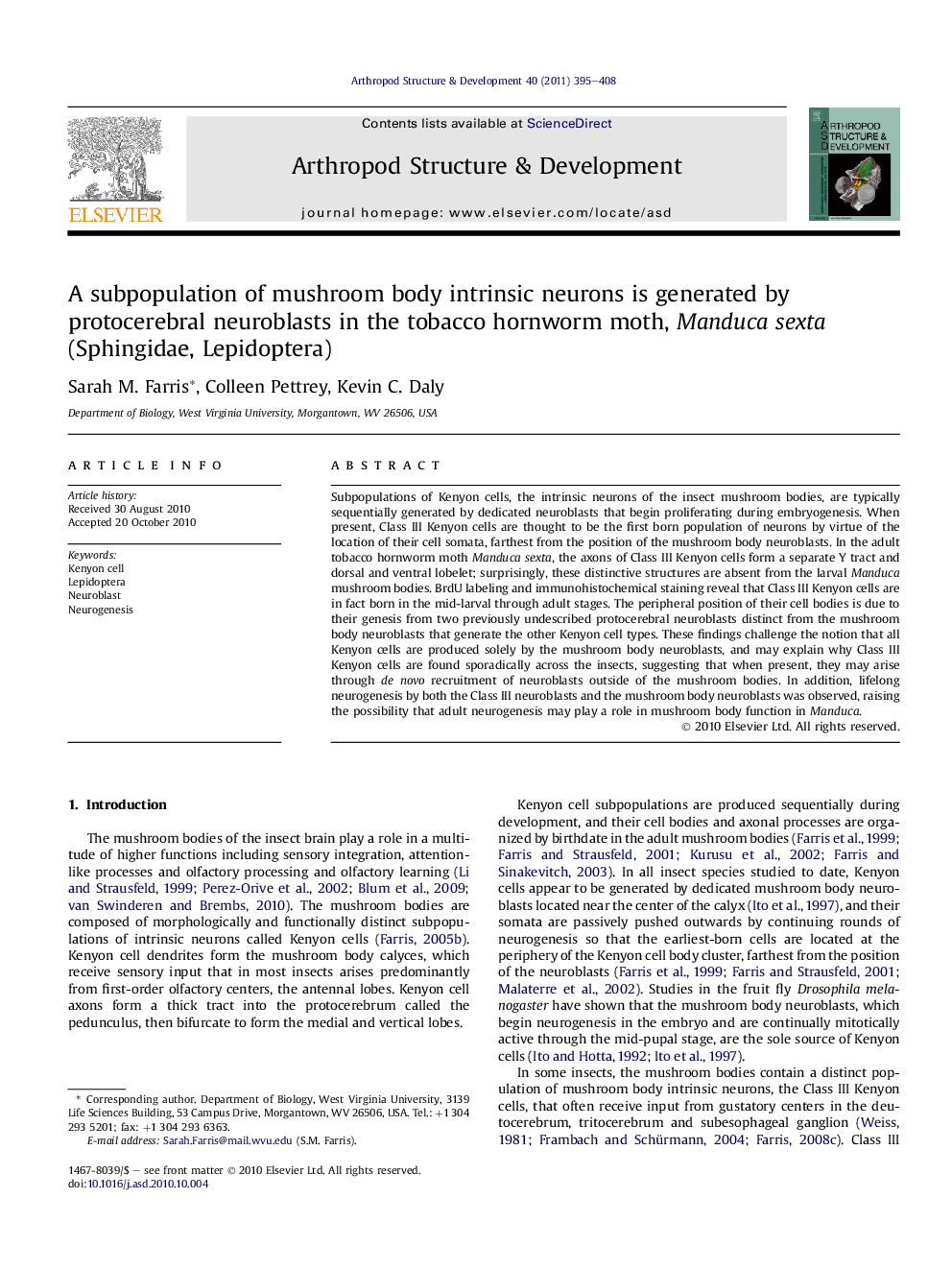| Article ID | Journal | Published Year | Pages | File Type |
|---|---|---|---|---|
| 2778814 | Arthropod Structure & Development | 2011 | 14 Pages |
Subpopulations of Kenyon cells, the intrinsic neurons of the insect mushroom bodies, are typically sequentially generated by dedicated neuroblasts that begin proliferating during embryogenesis. When present, Class III Kenyon cells are thought to be the first born population of neurons by virtue of the location of their cell somata, farthest from the position of the mushroom body neuroblasts. In the adult tobacco hornworm moth Manduca sexta, the axons of Class III Kenyon cells form a separate Y tract and dorsal and ventral lobelet; surprisingly, these distinctive structures are absent from the larval Manduca mushroom bodies. BrdU labeling and immunohistochemical staining reveal that Class III Kenyon cells are in fact born in the mid-larval through adult stages. The peripheral position of their cell bodies is due to their genesis from two previously undescribed protocerebral neuroblasts distinct from the mushroom body neuroblasts that generate the other Kenyon cell types. These findings challenge the notion that all Kenyon cells are produced solely by the mushroom body neuroblasts, and may explain why Class III Kenyon cells are found sporadically across the insects, suggesting that when present, they may arise through de novo recruitment of neuroblasts outside of the mushroom bodies. In addition, lifelong neurogenesis by both the Class III neuroblasts and the mushroom body neuroblasts was observed, raising the possibility that adult neurogenesis may play a role in mushroom body function in Manduca.
► Manduca sexta Class III Kenyon cells are generated by non-mushroom body neuroblasts. ► This suggests a novel mechanism for the evolution of mushroom body neuron diversity. ► Neurogenesis in adult Manduca mushroom bodies may play a role in adult behaviors.
